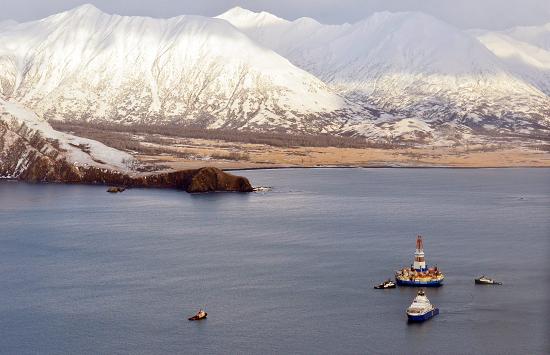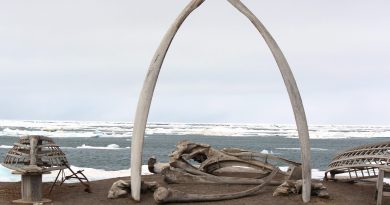Shell Oil’s Arctic drill rigs Kulluk, Noble Discoverer headed to Asia for repairs
 After weeks of relative silence, representatives with Royal Dutch Shell announced plans to move the centerpieces of its U.S. Arctic drilling operation out of Alaska and across the Pacific Ocean for repairs.
After weeks of relative silence, representatives with Royal Dutch Shell announced plans to move the centerpieces of its U.S. Arctic drilling operation out of Alaska and across the Pacific Ocean for repairs.
Both the much maligned Noble Discoverer and Kulluk, who have faced serious mechanical difficulties since completing Arctic drilling operations off of Alaska’s Arctic Continental Shelf last summer, will be headed to Asia soon according to a statement from Shell Alaska spokesman Curtis Smith.
The Kulluk, which has remained anchored off of Kodiak Island since its New Year’s Eve grounding, will be towed from there to the international Port of Dutch Harbor pending a tow plan approval. From Dutch Harbor, the 266-foot diameter conical drilling unit will then be dry-towed to a ship yard in Asia with a suitable dry dock.
The Discoverer’s operator, Noble Drilling Corp., will also dry-tow the Discoverer from its current location in Seward to South Korea.
“The outcome of further inspections for both rigs will determine the shipyard schedule and timing of their return to service,” Smith said in the statement.
When exactly the rigs will leave Alaska is unclear. A representative from Unified Command, the joint operation involving Shell, U.S. Coast Guard and Alaska Department of Environmental Conservation, could not say whether the vessel remained in Kiliuda Bay Monday. They noted that the latest information on the vessel was on the command’s website — which hasn’t been updated since Jan. 30.
The announced move is the latest turn in a series of increasingly unfortunate circumstances for the drilling rigs. Both ships were originally destined for repairs in the Seattle area. That changed quickly for the Kulluk at the end of 2012, when high, rough seas in the Gulf of Alaska caused the engines of the Kulluk’s tow — the brand new, Shell-operated Aiviq — to fail, eventually losing multiple tow connections with the Kulluk. Other ships were called in to help, but none where able to secure the vessel, which crashed onto the shores of Kodiak Island on Dec. 31.
The Discoverer, too, has dealt with its own mechanical issues. The drilling rig — a backup to the Kulluk — nearly ran aground near Dutch Harbor this summer. While in port, the ship suffered a smokestack fire and was later cited for pollution control problems.
While the decision to move the ships isn’t a death-blow, it had environmental advocates seizing the chance to once again point out Shell’s mishaps — and potential dangers — in drilling in an Arctic environment.
“These serious transportation, logistics, and drilling failures — collectively — provide strong evidence of Shell’s inability to effectively undertake oil drilling in the harsh environment of the Arctic Ocean, and raise questions about any company’s capacity to do so,” said Lois Epstein, Arctic Program Director for The Wilderness Society.
Shell has invested nearly $4.5 billion in its drilling operation. How the 2013 drill season — which runs from July to October — will be impacted remains to be seen.
“In addition to the drilling rig assessments/repairs, a number of investigations and reviews are underway. It’s too soon to know what the outcomes of those investigations will be,” Smith wrote. “In the meantime, we are exploring a range of options for exploration work offshore Alaska in 2013.”
Contact Suzanna Caldwell at suzanna(at)alaskadispatch.com
For more stories from Alaska Dispatch, click here



